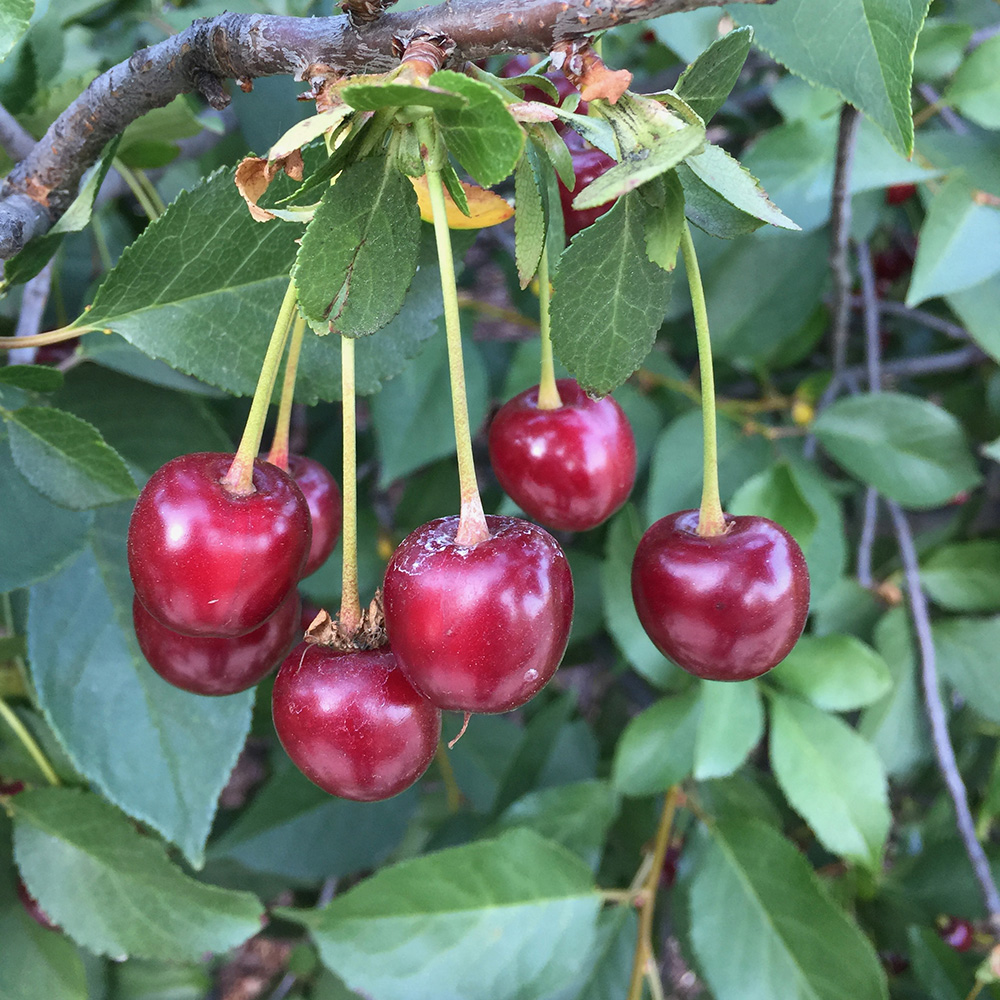
Fruit trees provide delicious food for your family during part of the year, but they do require year-round care. That doesn’t mean caring for your fruit trees has to be difficult! Once you have established young fruit trees in your yard, they are quite easy to maintain.
Placement is important. Remember that most fruit trees need plenty of sun, so don’t plant them where sunlight will be blocked by walls or taller trees. Space your fruit trees far enough away from one another that they aren’t forced to compete for resources. This spacing will vary according to the size and type of trees you choose, so consult carefully with one of our nursery experts before planting your saplings.
Water. Newly planted trees require about a gallon of water every seven days, with this amount increasing throughout the growth season. Once trees are mature, their root systems generally provide much of the water needed for survival. However, you should still water your fruit trees during periods of drought, and check them for signs of malnourishment. Over-watering trees can cause yellowed leaves or defoliation. If they’re under-watered, leaves will curl or defoliation will occur. If mature trees are producing a reasonable amount of medium-sized or larger fruit, you’ve found the right balance.
Fertilize. Fruit trees that have used up all of the nutrients in the soil will begin to decline. Many growers of fruit trees choose to test the soil each year; others opt to fertilize soil regardless of health. If you choose to fertilize the soil around your fruit trees, choose a fertilizer with a high nitrogen content. Fertilize your trees during the growing season, not their resting season, because you don’t want to stimulate new growth when your trees should be taking a break.
Calcium supplementation may also be used to improve the health of your trees and their fruit – but don’t overdo it. Follow package directions carefully.
Pruning. Prune your fruit trees during the dormant season. For deciduous fruit trees, this is from December to January (with an exception for apricot trees, which should be pruned in summer). Citrus trees don’t actually need to be pruned, but you might choose to do so in order to maintain its appearance. If you do choose to prune citrus trees, do it in the spring before flowers appear. And of course, always remove dead twigs and branches, as they can promote certain diseases or invite pests.
To get large (delicious!) fruit, be sure to remove about 1/3 of the small fruit that begin to develop at the start of each tree’s fruiting season. Keeping too much fruit on a tree can result in broken branches or under-developed fruit. Selectively removing some of the weight for the tree will result in a happier tree and better fruit!
As always, proper care of fruit trees is specific to the variety of tree. The above information will get you started, but it’s best to seek expert guidance for each species of tree that you own. For more assistance with the care of your fruit trees, give us a call.









Write a comment: